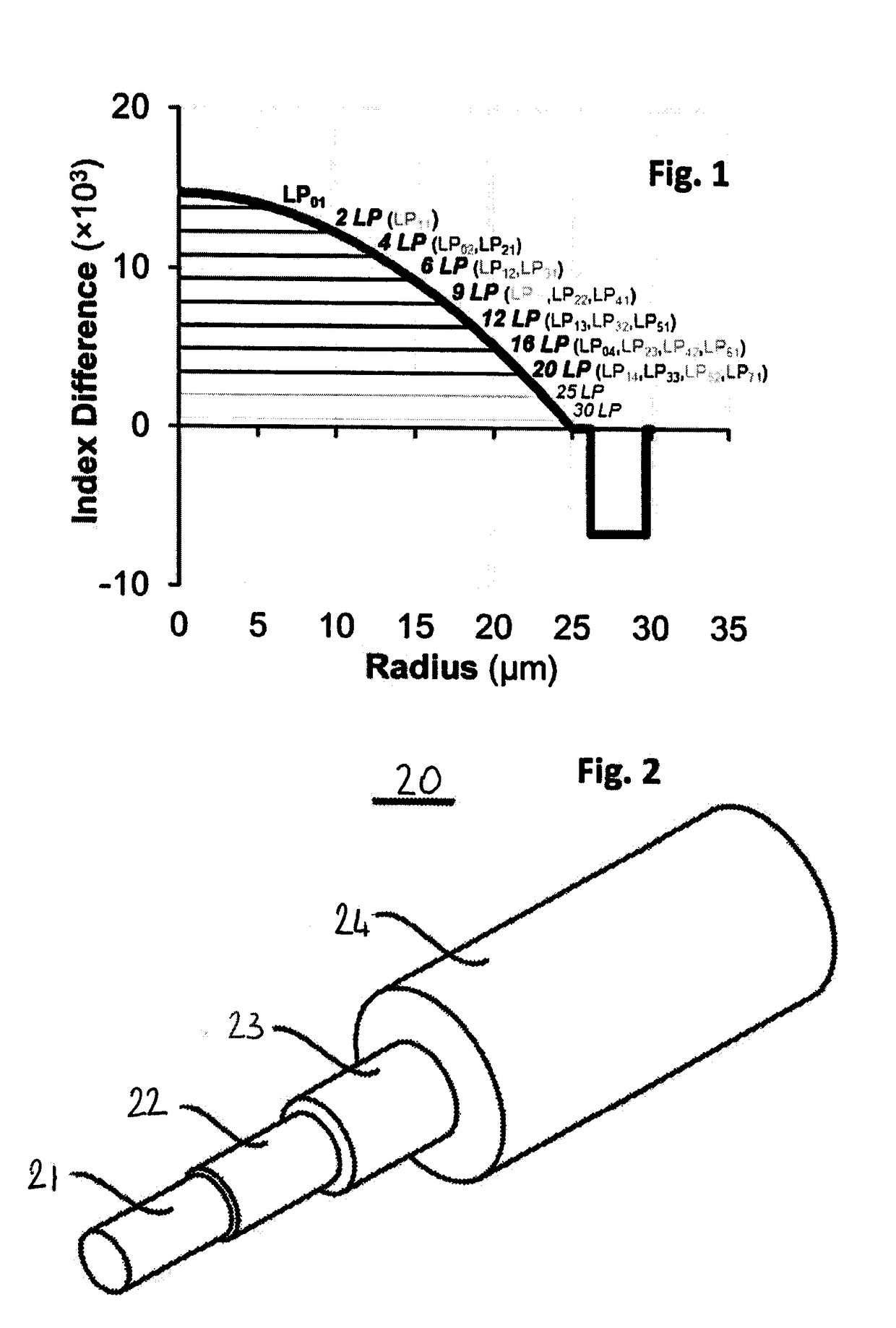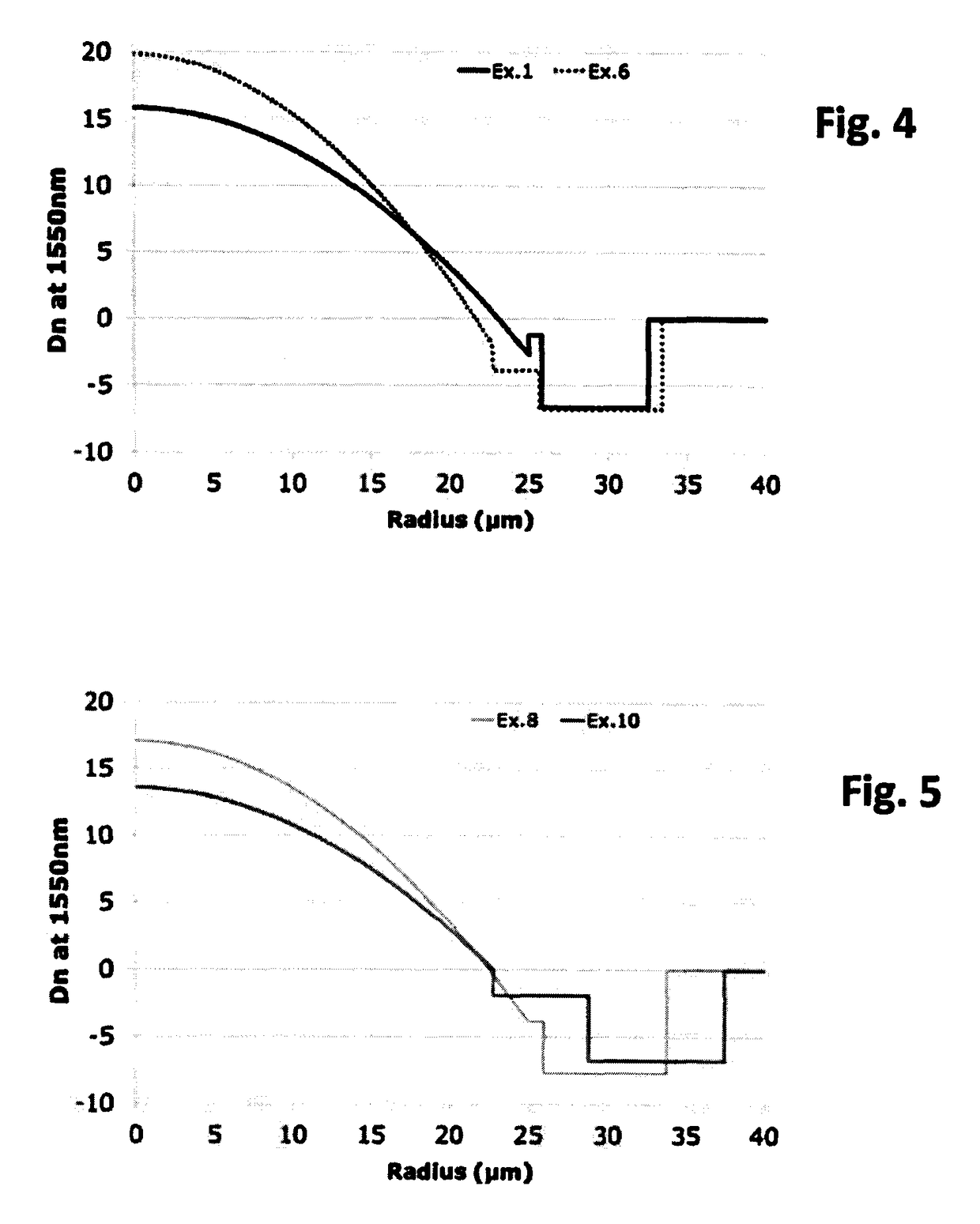Few mode optical fibers for mode division multiplexing
- Summary
- Abstract
- Description
- Claims
- Application Information
AI Technical Summary
Benefits of technology
Problems solved by technology
Method used
Image
Examples
Embodiment Construction
[0082]The general principle of the present disclosure is to propose a carefully designed trench-assisted graded index few-mode optical fiber, showing reduced Differential Mode Group Delay and supporting more LP modes over prior art FMFs. More precisely, the purpose of such a design is to optimize the interface between the graded-index core and the trench, in order to increase the number of supported LP modes up to 25 or 30, while keeping the Differential Mode Group Delay between any combination of LP guided modes low, preferably below 200 ps / km, and while keeping the bend loss of any LP guided modes low, preferably below 100 dB / turn at 10 mm bend radius.
[0083]Light travelling in an optical fiber actually forms hybrid-type modes, which are usually referred to as LP (linear polarization) modes. The LP0p modes have two polarization degrees of freedom and are two-fold degenerate, the LPmp modes with m≥1 are four-fold degenerate. These degeneracies are not counted when designating the nu...
PUM
 Login to View More
Login to View More Abstract
Description
Claims
Application Information
 Login to View More
Login to View More - R&D
- Intellectual Property
- Life Sciences
- Materials
- Tech Scout
- Unparalleled Data Quality
- Higher Quality Content
- 60% Fewer Hallucinations
Browse by: Latest US Patents, China's latest patents, Technical Efficacy Thesaurus, Application Domain, Technology Topic, Popular Technical Reports.
© 2025 PatSnap. All rights reserved.Legal|Privacy policy|Modern Slavery Act Transparency Statement|Sitemap|About US| Contact US: help@patsnap.com



